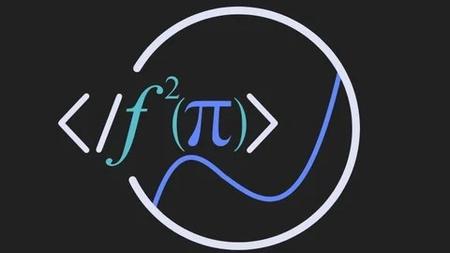English | MP4 | AVC 1280×720 | AAC 44KHz 2ch | 95 lectures (19h 3m) | 15.69 GB
Theory, numerical approximations, intuition, and visualization in integral calculus. Enhance your math-coding skills.
The beauty and power of integral calculus
If Calculus 1 was about understanding change, then Calculus 2 is about accumulation: how small changes stack up to build area, volume, probability, and complexity. Integration is where mathematics meets imagination — it’s where the abstract and the physical merge.
From Riemann sums to probability distributions, from arc lengths to solids of revolution, integral calculus provides the tools to describe, quantify, and visualize everything from the motion of particles to the structure of data. It’s a gateway to multivariable calculus, mathematical modeling, and data science.
And it’s not just a theoretical subject. Integration is foundational to fields including physics, engineering, machine learning, quantitative finance, and statistics. If you want to understand the algorithms behind data science or build the mathematical foundation needed for AI, you need to understand integrals.
So whether you’re here to strengthen your math background, prep for a university course, or just challenge your brain — welcome.
Why learn integral calculus?
There are three reasons to study integrals:
Real-world relevance: Integral calculus is used in nearly every STEM discipline — especially in areas like physics, economics, biology, and computer science. You’ll learn how to compute volumes, model systems, and understand distributions — even extend into multivariable integration.
Cognitive training: Integration requires both precision and creativity. You’ll develop deep reasoning skills as you learn to connect concepts, derive formulas, and implement algorithms. It’s like mental weightlifting.
Math as a lifelong hobby: Instead of scrolling through another social-media feed, why not learn how to calculate the surface area of a rotating shape or simulate a probability distribution from scratch?? This course is a good way to keep your mind sharp and intellectually active.
Learn calculus the old way, or learn it the modern way?
You could learn integration by watching a lecture filled with blackboard equations and hoping it sinks in. Or you could take a more interactive, hands-on approach.
This course follows the principle that “you can learn a lot of math with a bit of coding.”
You’ll use Python — especially NumPy, SymPy, and Matplotlib — to visualize integrals, implement numerical approximations, explore convergence, and gain intuition for the fundamental ideas of calculus.
What you’ll learn
- Calculus
- Integration
- Python
- numpy
- sympy
- matplotlib
- scipy
- Visualization
- Mathematics
- Geometry
- Proofs
- Applied integration
- Riemann sums
Table of Contents
Introductions and course materials
1 Prerequisites and how to rock this course
2 About the CodeChallenge videos
3 Downloading and using the code
4 My policy on sharing code
5 Use ChatGPT to learn calculus
Intuition for integration
6 Section summary and goals
7 Integration as inverse differentiation
8 CodeChallenge Drawing discrete integrals
9 Integration as geometric area
10 The dual perspectives of integration
11 The fundamental theorem of calculus Part 1
12 The fundamental theorem of calculus Part 2
13 CodeChallenge Approximate exact integrals 12
14 CodeChallenge Approximate exact integrals 22
15 Why integration is harder than differentiation
16 Calculart Fun and beauty with calculus
Tangent Does math mean anything
17 How much of math reflects reality
Geometric approximations
18 Section summary and goals
19 Riemann sums
20 CodeChallenge Riemann approximations 12
21 CodeChallenge Riemann approximations 22
22 Net vs total area
23 CodeChallenge Net and total area
24 Lebesgue integration
25 CodeChallenge Lebesgue in Blefuscu 12
26 CodeChallenge Lebesgue in Blefuscu 22
27 Calculart Riemannesque animations
Tangent Edutainment
28 Pros and cons of edutainment
Integrating functions
29 Section summary and goals
30 How to integrate formally and practically
31 Integrating polynomials
32 More on sympy integration
33 Constant of integration Whats with the C
34 Integration constants in Python
35 CodeChallenge Code the initial value problem
36 CodeChallenge infinite practice problems
37 Linearity of integration
38 CodeChallenge Explore linearity 12
39 CodeChallenge Explore linearity 22
40 Numerical integration in scipy
41 Integrating sine and cosine
42 Transcendental functions exp and log
43 What about product quotient and chain rules
44 Calculart Whispy sine lines
45 Calculating net and total area
46 CodeChallenge Net and total areas algorithm
47 Integrating even and odd functions
48 Create practice problems with ChatGPT
49 Reversing the limits of integration
50 Calculart Create music from equations
Tangent How can we know anything in math
51 Mathematical epistomology
Improper integrals
52 Section summary and goals
53 What are improper integrals
54 Infinite intervals
55 CodeChallenge Convergence and divergence
56 Two infinite bounds
57 CodeChallenge Improper trig integrals
58 Functions with discontinuities
59 CodeChallenge approaching real infinity
Integration techniques
60 Section summary and goals
61 Usubstitution
62 Integration by parts
63 Partial fractions
64 CodeChallenge Partial fractions algorithm
65 ChatGPT as your integration tutor
66 CodeChallenge Fun with functions
Tangent life as a function to integrate
67 The good life according to calculus
Applications in geometry
68 Section summary and goals
69 Area between two curves
70 CodeChallenge Numerical approximations
71 Calculart A vase two faces or just math
72 Parametric curves
73 Curve arc length theory
74 Curve arc length practice Python
75 CodeChallenge approximating curve lengths
76 Calculart Lissajouss hypotrochoids
77 Creating solids of revolution
78 Measuring volumes of solids
79 Measuring surfaces of solids
80 CodeChallenge Approximating volumes and surfaces
Applications in statistics
81 Section summary and goals
82 Probability density functions pdfs
83 CodeChallenge Creating pdfs
84 Cumulative distribution functions cdfs
85 CodeChallenge cdfs and pdfs
86 Calculating probabilities
87 CodeChallenge Calculating probabilities in python
Tangent is studying math pointless
88 Why learn math if youll forget it
Multivariable integration
89 Section summary and goals
90 Multivariable indefinite integrals
91 CodeChallenge partial and double integrals
92 Multivariable definite integrals
93 CodeChallenge numerical double integrals
Bonus section
94 Bonus content
Resolve the captcha to access the links!
